This story was initially revealed by CalMatters and is republished right here with permission. Join for his or her newsletters.
In 1953, Bárbara Flores entered kindergarten at Washington Elementary College in Madera, California, a small metropolis within the Central Valley surrounded by farm fields. Her mom and grandmother had talked it up: You’re going to study so much. You’re going to love it. She believed them. Slightly woman who would at some point turn into a trainer, Flores was excited.
However solely till she obtained there.
“I walked out,” Flores recalled not too long ago. She obtained to her grandmother’s home a couple of blocks away, livid. “Son mentirosas,” she stated. “No entiendo nada. Y jamas voy a regresar.” You’re liars. I don’t perceive something. And I’m by no means going again.
Flores solely spoke Spanish. Because the grandchild of Mexican immigrants, she didn’t discover her language or tradition welcome within the college. However little Bárbara didn’t get her method. And, after depositing her daughter again within the classroom, Flores’ mom requested the trainer a query: Aren’t you paying consideration? My daughter walked out. The reply felt like a slap and have become part of household lore. All these little Mexican women look alike. I didn’t discover.
Flores returned to her old fashioned this fall; the constructing she walked out of nonetheless stands, however nearly the whole lot else has modified. Now college students converse Spanish as a result of their academics require them to. Little Mexican women see their tradition celebrated on the partitions of each classroom.
Washington college students will graduate figuring out find out how to converse, learn, and write in each Spanish and English, becoming a member of a rising variety of “dual-language immersion” faculties in California. Flores’ eyes open broad as she describes the about-face her alma mater has taken.
“We had been punished for talking Spanish,” she stated. “We had been hit with rulers, pinched, our braids had been pulled. Now the entire college is dual-language.”

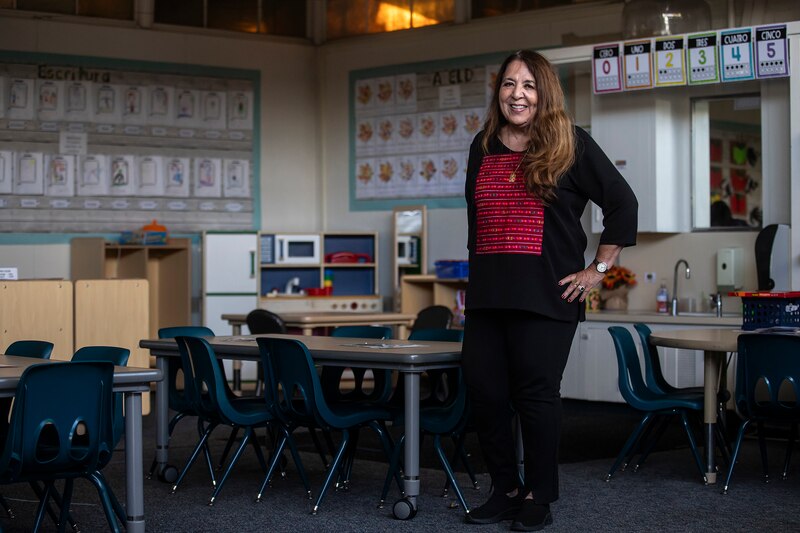
The trail has not been linear. When Flores was a toddler, California nonetheless had an English-only regulation on the books from the 1800s. As governor, Ronald Reagan signed a invoice eliminating it. Then the Civil Rights Motion ushered in a brand new period of bilingual schooling, and the California Legislature went additional, requiring the mannequin for college students nonetheless studying English from 1976 till the anti-immigrant backlash of the Nineties. Voters banned it once more in 1998, solely reversing the newest prohibition in 2016.
Researchers have discovered bilingual schooling helps college students study English quicker and might increase their standardized check scores, improve commencement charges, higher put together them for school and rather more. California has eliminated the official obstacles to providing such a instruction since 2016, and the state now champions bilingualism and biliteracy, encouraging all college students to attempt for each. However eight years after repeal, California faculties have but to recuperate. A decades-long enrollment stoop in bilingual-teacher prep packages has led to a decimated trainer pipeline. And underinvestment by the Legislature, paired with a hamstrung state Schooling Division, has restricted the tempo of bilingual schooling’s comeback.
The consequence? A uncommon case through which Californians can say Texas is inspiring. Each states enroll greater than 1 million college students nonetheless studying English — however final 12 months, the Lone Star State put 40% of them in bilingual lecture rooms. California managed that for simply 10%.
In 1987, Flores didn’t assume state coverage would go this manner. On the time, each states required bilingual schooling. She was a professor, serving to construct a bilingual-education trainer prep program at Cal State San Bernardino. Her residence state might have stored tempo with Texas.
Nevertheless it didn’t.
The English-only years: 1998 to 2016
By 1998, the bilingual-teacher prep program was flourishing. Flores helped aspiring academics perceive how college students study to learn and write in two languages, sending them off into lecture rooms with binders stuffed with educational suggestions. Her daughter, then 10, was studying each English and Spanish via bilingual courses within the San Bernardino Metropolis Unified College District. Flores was on a mother or father committee organizing broader help for such packages within the face of a statewide marketing campaign to do away with them, bankrolled by Silicon Valley entrepreneur Ron Unz.
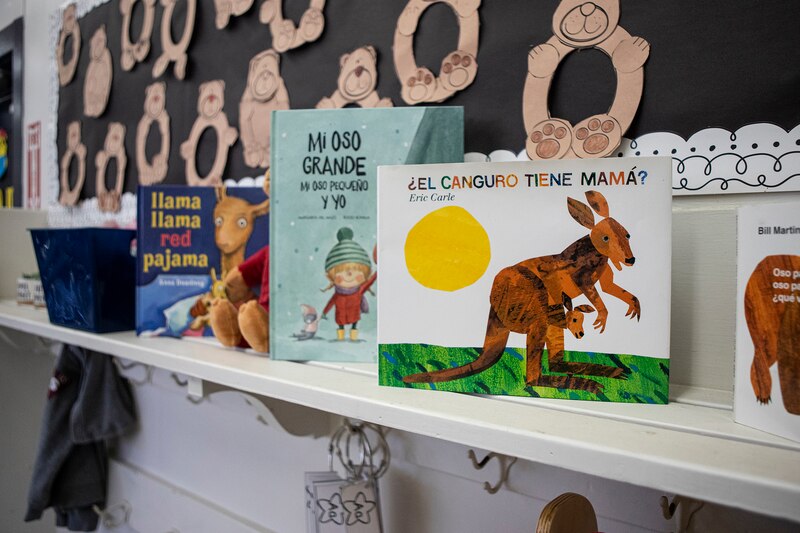
Proposition 227, which handed with 61% of the vote, required faculties to show solely in English with college students who had been nonetheless studying the language, one thing that will sound like a good suggestion however usually finally ends up unnecessarily placing college students’ grade-level studying of different topics on pause whereas they grasp English. Flores noticed the influence instantly. College on campus referred to as for the elimination of her program, an effort that in the end failed however confirmed, she stated, “the depth of the discrimination and language racism that was prevalent.” Enrollment in bilingual trainer prep packages throughout the state plummeted.
Flores additionally watched native college districts reply. “I used to be shocked at superintendents within the space,” she stated. “They simply made everyone throw away their Spanish books. It was horrendous.” As she recollects, each single college district within the Inland Empire removed its bilingual packages besides San Bernardino Metropolis Unified, the place mother or father activism helped make sure the district took benefit of an exception to the brand new regulation.
On the time, pupil achievement knowledge from San Bernardino Metropolis Unified had proven that bilingual packages had been serving to youngsters succeed. And over the subsequent twenty years, researchers learning packages throughout the USA launched a gradual stream of proof about the advantages of bilingual schooling, particularly a model referred to as “twin language.” Conventional bilingual schooling basically lets college students use their first language whereas they study English. As soon as college students turn into fluent, their faculties shift fully to English instruction, which was the purpose all alongside. Twin-language packages, in contrast, set bilingualism because the purpose. College students proceed to take programs in Spanish or one other language for about half of the varsity day till they depart this system.
Whereas dual-language packages usually cease after elementary college, the “bilingual benefit” stretches via college students’ Okay-12 years and into their working lives. Twin-language college students have been discovered to attain increased than their friends on each math and English language arts exams by center college. Additionally they get increased scores on the ACT in highschool, setting them as much as be extra aggressive in school admissions. And importantly, a crew at Stanford discovered that native Spanish audio system had been extra more likely to check out of English-learner providers in the event that they took bilingual courses, a coveted purpose due to how nicely “former English learners” do. College of Chicago researchers simply launched knowledge displaying that Chicago excessive schoolers on this group had higher-than-average GPAs and SAT scores, highschool commencement charges, and neighborhood school enrollment and persistence charges.
Patricia Gándara co-directs the UCLA Civil Rights Undertaking, which has revealed related findings, and has spent a long time of her profession cataloging the bilingual benefit. She laments the slender worth positioned on bilingual schooling within the U.S., the place it has traditionally been pursued as a method to assist youngsters who don’t converse English study the language extra rapidly after which achieve English-only courses.
“That’s a really shortsighted view,” Gándara stated, “notably from the analysis that we’ve achieved that reveals youngsters who get a powerful bilingual schooling usually tend to go to varsity, they’re extra more likely to full school, they’re extra more likely to have higher jobs and higher alternatives.”
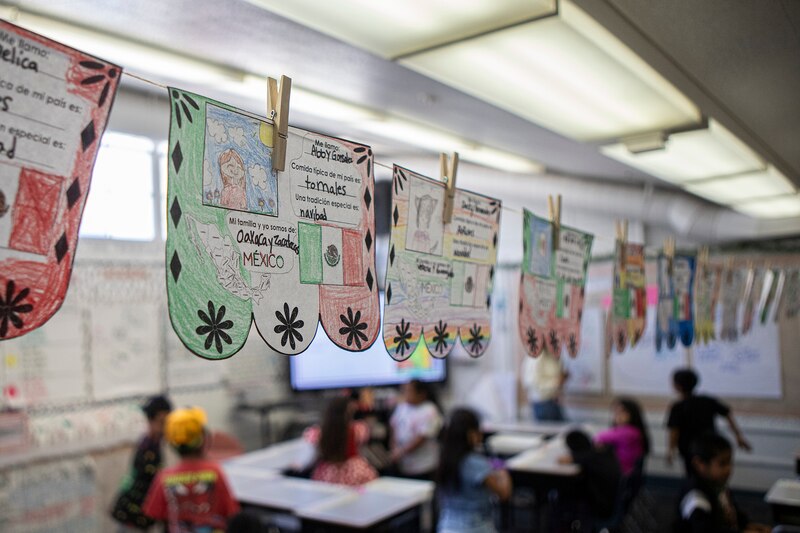
But whereas policymakers didn’t catch on immediately, well-off and well-educated white dad and mom did, seeing the financial advantages of bilingualism for his or her youngsters very clearly.
Glendale Unified College District launched its first Spanish-English dual-language program in 2003, occurring so as to add packages in six different languages whereas official state coverage was to ban them. Final 12 months, 85% of the scholars enrolled had been fluent English audio system, based on program director Nancy Hong.
Immigrant households, weighed down by the strain to talk English and ensure their youngsters do too, have been arduous to recruit. Hong stated immigrant dad and mom have lengthy been involved that letting their youngsters spend half the varsity day or extra listening to their residence language will get in the way in which of studying English, though analysis has proven it could actually make the entire course of go quicker. “The purpose is to dismantle these myths and misperceptions,” she stated. However though about 20% of scholars districtwide are English learners, solely about 10% of them are in dual-language packages.
Many immigrant households, nevertheless, have turn into robust advocates for the packages. José Sanjas, a Mexican-born father in Madera Unified College District, takes his 6-year-old daughter previous her neighborhood college day-after-day en path to one of many district’s dual-language packages. He and his spouse need to protect their native language as their daughter grows up right here, however the draw isn’t solely private; Sanjas additionally sees how bilingualism will profit his daughter within the office.
“She might help extra folks sooner or later,” Sanjas stated. “Professionally, she’ll have the ability to serve everybody.”
Spurred on by help like his, a various coalition of faculty leaders in Madera Unified had, by 2016, come to see dual-language schooling as key to turning across the district’s chronically low efficiency, particularly among the many youngsters of immigrants. Flores had helped make the case, inviting college board members to the annual convention of the California Affiliation for Bilingual Schooling. And in Flores’ hometown, U.S.-born white households had been amongst these talking up in help of the packages, figuring out even when the immigrant college students’ check scores had essentially the most room to develop, their youngsters may benefit too.
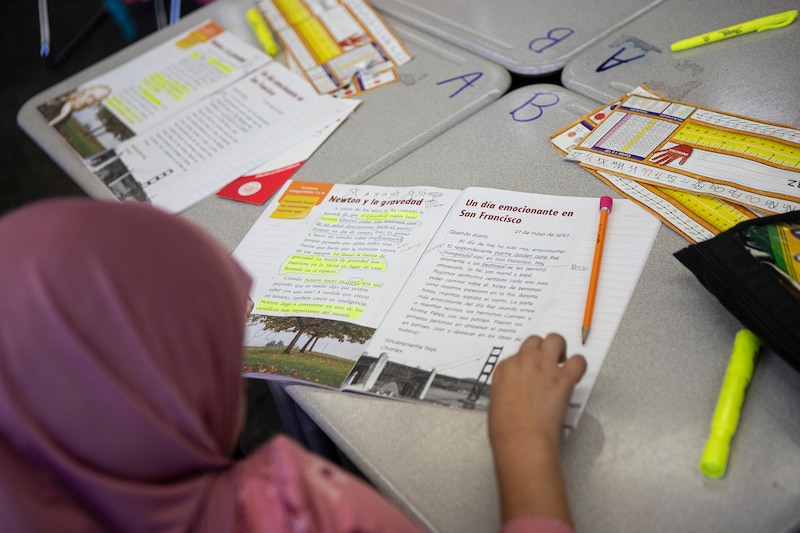
Statewide, public opinion had swung within the different path; that November, about 74% of California voters stated sure to Proposition 58, formally permitting bilingual schooling again in California lecture rooms.
“It was a aid we [could] lastly transfer ahead for our youngsters,” Flores stated. “We misplaced an entire technology of youngsters — fairly a couple of generations, actually — due to English-only.”
The following technology, nevertheless, continues to be ready.
A limping restoration: 2016 to 2024
Flores spent 40 years coaching future academics earlier than retiring in 2019. Throughout three establishments and 32 years at Cal State San Bernardino, she possible taught 10,000 college students, lots of whom stay sprinkled all through the state’s bilingual schooling system. But when something defines the legacy of Prop. 227, it’s the shattered trainer pipeline it left in its wake.
Gándara, of the UCLA Civil Rights Undertaking, stated the present state of affairs is “a type of tales of ‘I informed you so.’ … I might see what the issue was going to be: that when folks got here again to their senses and realized what a mistake this was, the massive fallout was going to be that we didn’t have the academics.”
California schools usually are not producing almost sufficient academics to fulfill the state’s bilingual schooling targets. Throughout the 2022-23 college 12 months, the state fee on trainer credentialing solely approved 1,011 new bilingual academics — throughout all languages. Solely seven went to academics who converse Vietnamese, the second-most-common language in California faculties that 12 months. And it really gave out fewer credentials to Spanish-speaking academics that 12 months than within the three years prior.
The Legislature has not ignored this drawback fully. In 2017, it funded six grants, totaling $20 million, to assist districts coach up bilingual staffers and put together them to steer bilingual lecture rooms. However Edgar Lampkin, CEO of the California Affiliation for Bilingual Schooling, stated seeding such “develop your individual” packages falls far in need of addressing the statewide want. “That’s not systemic,” he stated.
In 2022, the Nationwide Useful resource Heart for Asian Languages, primarily based at Cal State Fullerton, obtained state cash to coach 200 academics over 5 years. They’re on observe, and the middle’s director, Natalie Tran, is proud that their packages usually are not solely growing the variety of academics licensed to show in Asian languages, but in addition diversifying the languages they converse. She expects to certify academics who converse Tagalog, Hmong, and Khmer this college 12 months. Nonetheless, she stated, the state must do extra to coach extra academics of Asian languages, together with the much less frequent ones. “We’re going to wish assist from policymakers to make this occur,” Tran stated.
She isn’t the one one calling on lawmakers to be a part of the answer. Anya Hurwitz is government director of SEAL, a nonprofit that obtained its begin as an initiative of the Sobrato Household Basis to handle achievement gaps between immigrant and native-born youngsters in Silicon Valley. She says the state underfunds schooling, which will get in the way in which of doing what’s finest for teenagers who don’t converse English.
In 2022, the final 12 months for which federal census knowledge is accessible, New York spent nearly $30,000 per pupil. California spent about $17,000. And moreover its help for trainer coaching, the Legislature has solely given districts $10 million further to begin or develop dual-language packages. In Massachusetts, residence to about one-tenth the variety of youngsters nonetheless studying English, the Legislature disbursed $11.8 million for a similar work, kicking off its personal restoration from an English-only regulation.
“Funding will not be the answer to the whole lot in and of itself,” Hurwitz stated, “however on the identical time, we will’t construct capability with out funding and sources.”
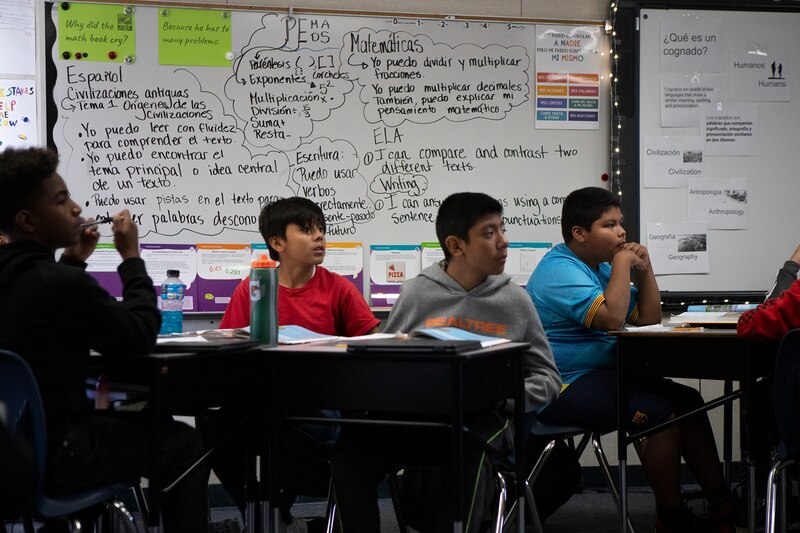
Again in Flores’ hometown, Madera directors have been ready to make use of state and federal cash earmarked for his or her sizable variety of immigrant households and people dwelling in poverty to attain their dual-language targets. However startup prices for dual-language packages are costly. Instructor preparation packages, Superintendent Todd Lile stated, usually are not producing graduates who’re prepared to do that work, leaving districts like his with steep skilled growth prices.
A residency program with Cal State Fresno has given Madera a strong pipeline of academics, however the latest grads need to clear all the same old hurdles of being new to the career whereas additionally adapting to utilizing Spanish within the classroom. Whereas these new hires at Washington Elementary College grew up bilingual, they went to highschool via the Prop. 227 years, that means most of them didn’t develop an instructional vocabulary in Spanish.
Viviana Valerio, a kindergarten trainer, stated that historical past made bilingual schooling an intimidating proposition. “I generally converse Spanish at residence, however then after I was fascinated about instructing, I used to be considering, ‘OK, educational phrases, I don’t know find out how to translate that,’ or ‘Mother and father ask me a query and I can’t consider it, I’m going to need to transition into English,’” she stated. “For me, that was the scary half.”
Texas, too, lacks bilingual schooling academics, echoing a scarcity current in a lot of the nation, however the state is way forward of California; many districts are in a position to recruit their very own alumni as a result of their packages have been round so lengthy. Texas additionally continues to spend money on bilingual schooling, serving to districts adjust to state mandates to supply it. Like California, Texas offers districts extra per-pupil funding for each pupil nonetheless studying English; not like California, Texas provides a further premium for every of them enrolled in a dual-language program.
As an additional incentive to begin and preserve these packages, Texas has began bumping up funding for the native English audio system enrolled, too. Analysis reveals the packages work higher when courses are evenly break up between native English audio system and audio system of this system’s second language. Then, not solely are college students studying their second language from the trainer however from their friends as nicely. Conveniently, this additionally makes for extra built-in lecture rooms, one thing Gándara stated California wants.
“We haven’t been in a position to make the most of that, largely as a result of folks don’t take note of that as a serious subject and likewise as a result of we don’t have the academics to drag it off,” Gándara stated.
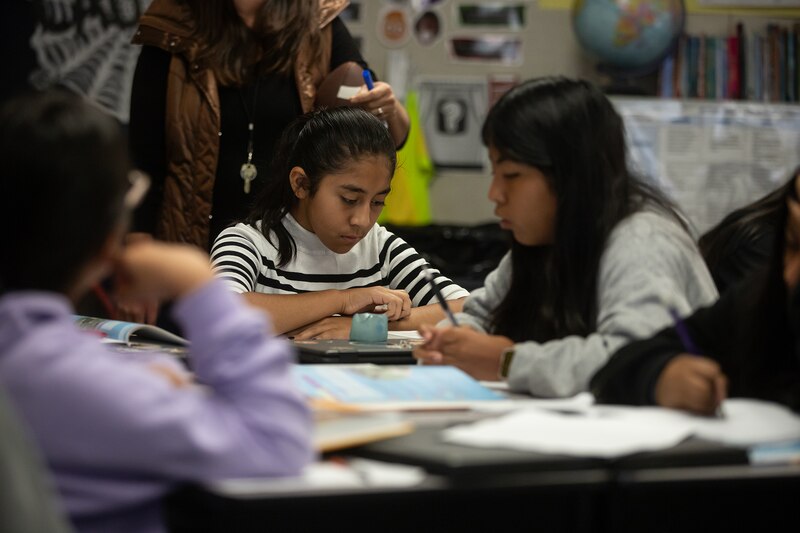
Certainly, districts throughout the state cite staffing as a serious barrier to beginning or increasing their packages. Some have gone overseas to recruit. Others have been compelled to scrap their plans fully. Newark Unified College District, within the Bay Space, removed its dual-language program this 12 months as a result of it couldn’t discover academics to employees it. “We tried the whole lot,” stated Karen Allard, assistant superintendent of schooling providers.
For greater than a decade now, the state’s Schooling Division has tried to champion bilingual packages. College students who can show their fluency in two languages earlier than commencement get a particular seal on their diplomas. The division additionally implores faculties to assist the youngsters of immigrants preserve their residence language whereas studying English, constructing that advice into its 2017 English Learner Roadmap. By 2030, it desires half of California college students on a path to turning into bilingual.
But all of this largely quantities to cheerleading. The division is minimally funded and staffed, a results of the state’s dedication to sending nearly all Okay-12 funding instantly to highschool districts, and its help for bilingual schooling has not include any agency calls for.
Conor Williams, a senior fellow at The Century Basis, a progressive assume tank primarily based in Washington, D.C., not too long ago discovered himself — a self-described “skilled lefty” — within the shocking place of celebrating Texas’ coverage over California’s. In addition to following Texas’ lead on funding, he stated, California ought to rethink trainer licensing. The state requires school graduates to move a collection of checks to turn into academics, however Williams factors out the checks don’t result in higher instruction and might preserve good academics from lecture rooms. Eliminating the requirement might carry extra bilingual adults into the career and develop the trainer pipeline.
Arduous to beat, nevertheless, is California’s shift towards extra native management over education. Williams doesn’t at all times agree with what the Texas schooling division does with its energy, however the state’s centralized strategy means it has “sufficient energy and muscle and can to set guidelines and maintain districts to them,” he stated. California’s Native Management Funding Formulation is extensively fashionable and has ensured districts get extra state cash to serve college students nonetheless studying English in addition to these in foster care and low-income households. However, Williams factors out, native management has its limits.
“You don’t win civil rights battles by leaving it as much as native college boards,” he stated.
Nonetheless, districts like Madera are transferring forward on their very own. In 2020, Flores’ alma mater, Washington Elementary, grew to become Madera Unified’s second dual-language college, welcoming its top quality of kindergartners who’re anticipated to go away proficient in each English and Spanish.
Mateo Diaz Zanjas was one in all them. He’s now a fourth grader and speaks in straightforward Spanish in regards to the college and his long-term dream of going to Harvard. Upon listening to that he and his friends converse excellent Spanish, he eagerly replies: “We additionally converse good English.” And he proves it, occurring to reply questions in English about his favourite topics and the languages he speaks with sure buddies.
Directors, nevertheless, are nonetheless ready for the info to indicate that their guess on bilingual schooling will repay in pupil achievement beneficial properties. The pandemic interrupted their early years and set them again, and the oldest college students aren’t doing in addition to district leaders would have hoped. Dedication to the packages, nevertheless, has not waivered. College students’ total check scores stay low, however their development scores — or how a lot they study over the course of the 12 months — are excessive.
The district helps college students study English extra rapidly, too, that means they’re turning into “former English learners” quicker with the newer helps and becoming a member of the district’s highest-performing pupil group.
Within the meantime, Madera academics are utilizing bilingual schooling to provide Spanish audio system grade-level materials, figuring out that when they sharpen their English abilities, all that info will switch.
“Youngsters can study math in Spanish; it’s nonetheless math,” Lile stated. “They’ll study social research in Spanish; it’s nonetheless historical past and geography. These topic issues don’t exist solely in English.”
Throughout Flores’ latest go to to Madera Unified, she heard Lile describe his long-term targets for the district, together with increased commencement charges and higher school readiness for the youngsters of immigrants. She regarded on proudly, certain her hometown district was lastly getting it proper.
An unsure future: 2024 and past
A number of years in the past, Flores launched Lile to Margarita Machado-Casas, a professor at San Diego State’s Division of Twin Language and English Learner Schooling, which has lengthy been a high producer of the state’s bilingual academics. Machado-Casas helps the district work out what concrete steps academics and directors ought to take to comply with the high-level suggestions of the state’s English Learner Roadmap. They began out with “Precept 1,” which asks college and district staffers to see immigrant college students’ language and tradition as property reasonably than seeing their lack of English proficiency as a deficit. Pointing to Madera’s lengthy and painful historical past of discriminating in opposition to immigrant college students, together with Flores, Machado-Casas stated this precept unexpectedly took your complete first 12 months, requiring “brave conversations” — together with asking staffers to assume deeply about whether or not they believed within the work sufficient to remain within the district.
Machado-Casas helps educators in Madera perceive each find out how to assist immigrant college students sort out grade-level materials and persuade them that the scholars can deal with it.
Flores hopes the work finally ends up being a playbook for your complete state — which might quickly want one. Gov. Gavin Newsom signed a invoice this 12 months requiring the Schooling Division to give you a statewide plan for serving to districts undertake the street map’s tips and report on their progress.
This planning course of ensures California will likely be over a decade into its restoration from the English-only years earlier than the state even considers holding faculties accountable for altering their practices. When New York handed a blueprint for find out how to serve English learners in 2014, it adopted it up with new state laws that very same 12 months, creating stricter insurance policies for serving college students who had been nonetheless studying English, together with a broader mandate for bilingual schooling, which had already been required for many years.
Alesha Moreno-Ramirez leads the California Schooling Division’s multilingual help division. She stated state funds limitations have gotten in the way in which of implementing the English Learner Roadmap and stated any name to require bilingual schooling like Texas or New York must come from the Legislature, not the division. “That stated, we’d enthusiastically help the motion towards requiring bilingual schooling,” she added.
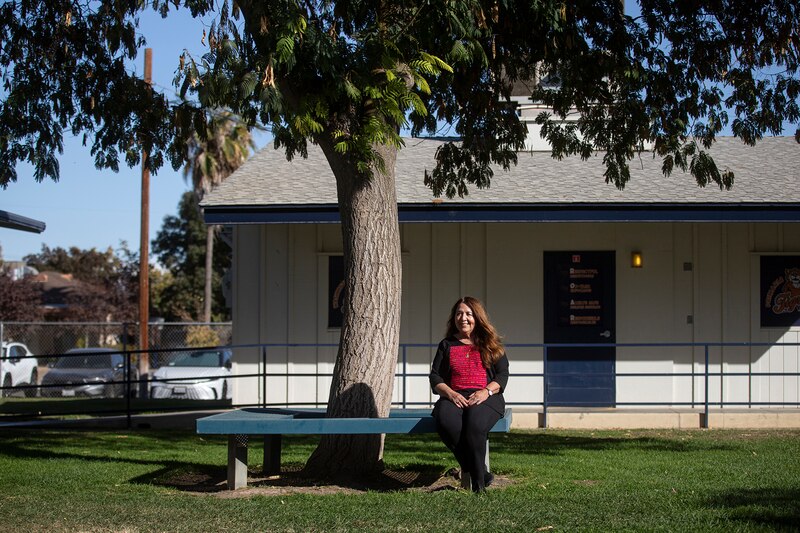
Advocates warning such a mandate must include sufficient funding to assist districts create high-quality packages, however many agree it might be a win for California college students. Kids from immigrant households converse 108 totally different languages, based on the Schooling Division, however 93% of them converse one in all 10. To require bilingual packages, the Legislature would possible tweak the present regulation, which says if the dad and mom of 30 or extra college students in a single college request a language acquisition program, the varsity has to supply it “to the extent attainable.” Texas, Illinois, and New York have related legal guidelines, however as an alternative of requiring bilingual packages in response to mother or father advocacy, they achieve this primarily based solely on enrollment.
Flores thinks the state is no less than transferring in the fitting path. And Madera Unified offers her hope. Throughout her latest go to, she was flooded with recollections: She noticed the tree she and her buddies used to circle whereas taking part in “Ring Across the Rosie.” She visited the classroom she walked out of as a 5-year-old, the place the partitions are actually embellished with vocabulary in Spanish in addition to English. She suffered in that room 70 years in the past. Now, little Mexican women don’t.
“We don’t cease,” she stated. “We preserve plugging away. That’s our tenacity. That’s our grit. And our motivation, after all, is for our youngsters.”

